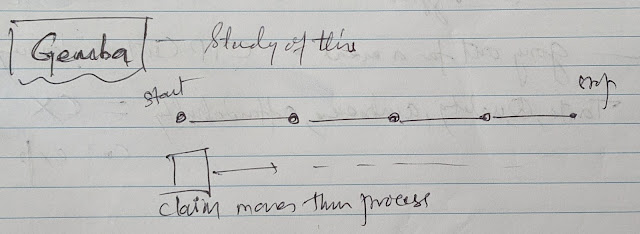Rationality --- means we can reason with logic instead of actually going and checking. We can argue and debate about it in the boardroom without having to go and check to see what actually is correct.
Logic is a kind of bias. it's a shortcut to save time and is ultimately less accurate.
Mid 20th centry. We loved rationality. Just think of a logical argument and bingo that's what is correct. Led to ugly, unfunctional, premodernist tower blocks in Russia. (bare concrete, minimalist, visible structural elements) --- We built them because there was a logical argument for them.
What's rational is not always correct, and what's correct is not always rational.
19060s, 70s -- we shouldn't just do it because you can rationalise it.
The most rational logic system in the world wee have ever created is communism. Logically thought the best way to run governments. 70s we started realising what's been going on in the USSR behind cameras. We realised Extent to which governments could go to in the name of rationalism. Far worse than anybody who has done anything in the name of religion.
Antonio Damasio --- neuroscientist. Brain damage research cound't feel emotions. People with impared emotions cannot make decisions. Ccouldnt make the most basic of decisions -- side salad or chips with your food.
Brain damage -- we can't decide what to have with food.
What this means is we cannot make decisions without emotions.
We are slaves of emotions. They are the driving force that get us to do everything. Emotions are irrational, they are hard to talk about.
Trying to look rational and logical in a design meeting is a big issue.
Post rationalisation -- logically explaining why something that has been done has been done. Thinking something afterwards.
Talk to customers -- they will post rationalise why something has been done. Waste of time.
If we stop trusing what people say and instead start watching what they might do -- go to their house or workplace to see how exactly they are working, we may get better results.
When we talk theory, we see people guessing and post rationalize.
People are incapable of doing something, if they can't feel emotions to it.
Dont trust what people say, instead start trusing what they do. Cooperatively work with them to understand their pain.
> When people justify their actions or choices with purely logical reason, it's a lie.
> All decisions or actions have some emotional rationale behind them.
> We can't make choices without emotions.
People fear that they are irrational forces them to post rationalise and try and guess why things have happened or why they have taken a certain decision.
This is true of yourself, your coworkers.
Critical Thinking
============
1. Accept we are not logical thinkers, we are not rational thinkers. And the fact that there is no such thing as rational thinker (in the context of humans and their emotions).
2. Can't decouple emotions from choices.
There's an emotion behind everything. When people post something -- on a blog or on social media, they "hope" to get more followings, likes, better jobs....
- Nobody is 100% correct or wrong
- Explore and try out other points of view
- Gather all information (across a broad, whole range of medium)
- What motivations and assumptions are present in the problem you are trying to solve
- Keep a single source of truth
Critical thinking is a good antidote to rational logic.
We always need to challenge our assumptions. We should always assume we are wrong. We should always document the problems we are trying to solve and for who.
Data-Driven Design
==============
Innovating or Iterating?
Both are different ways of working.




